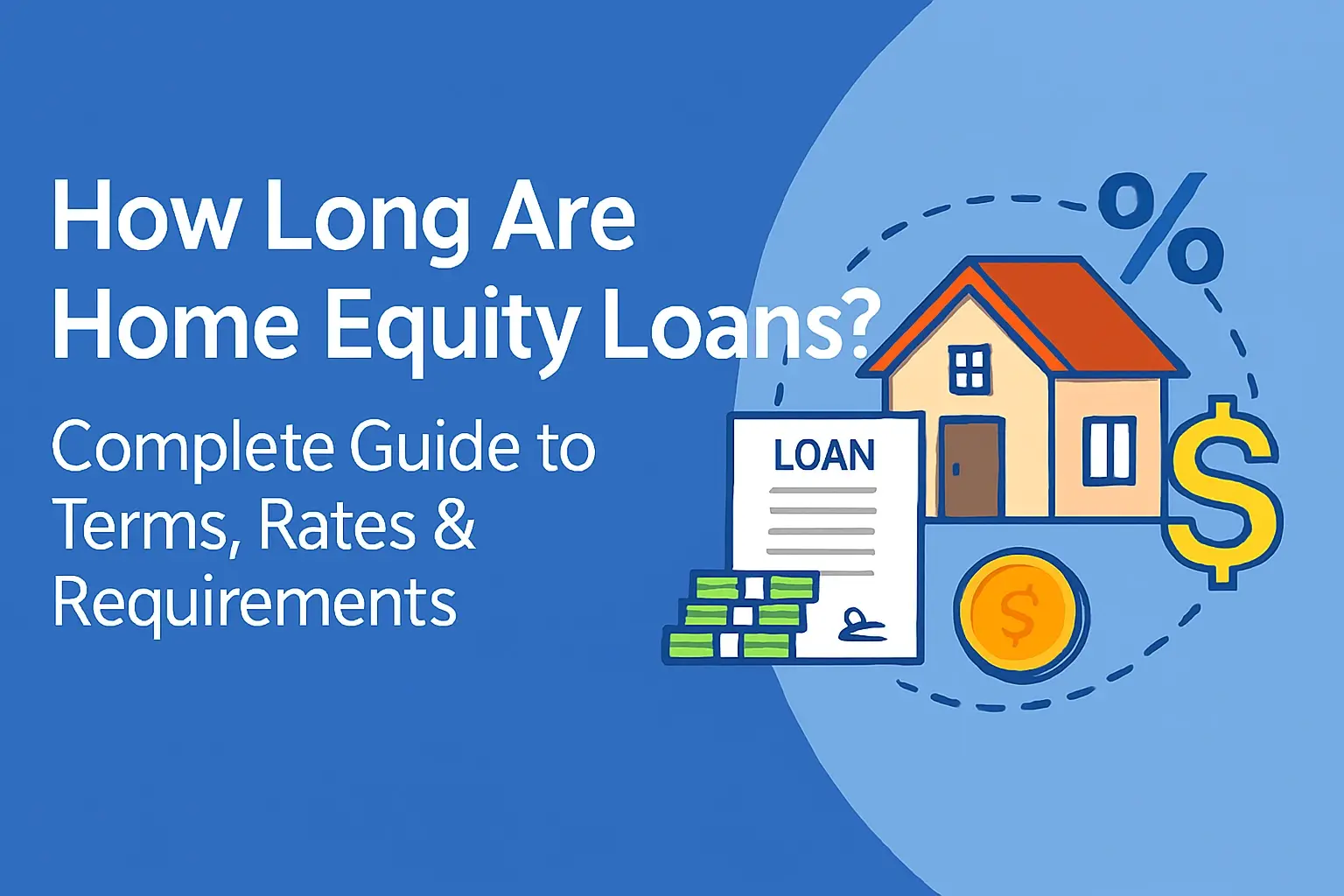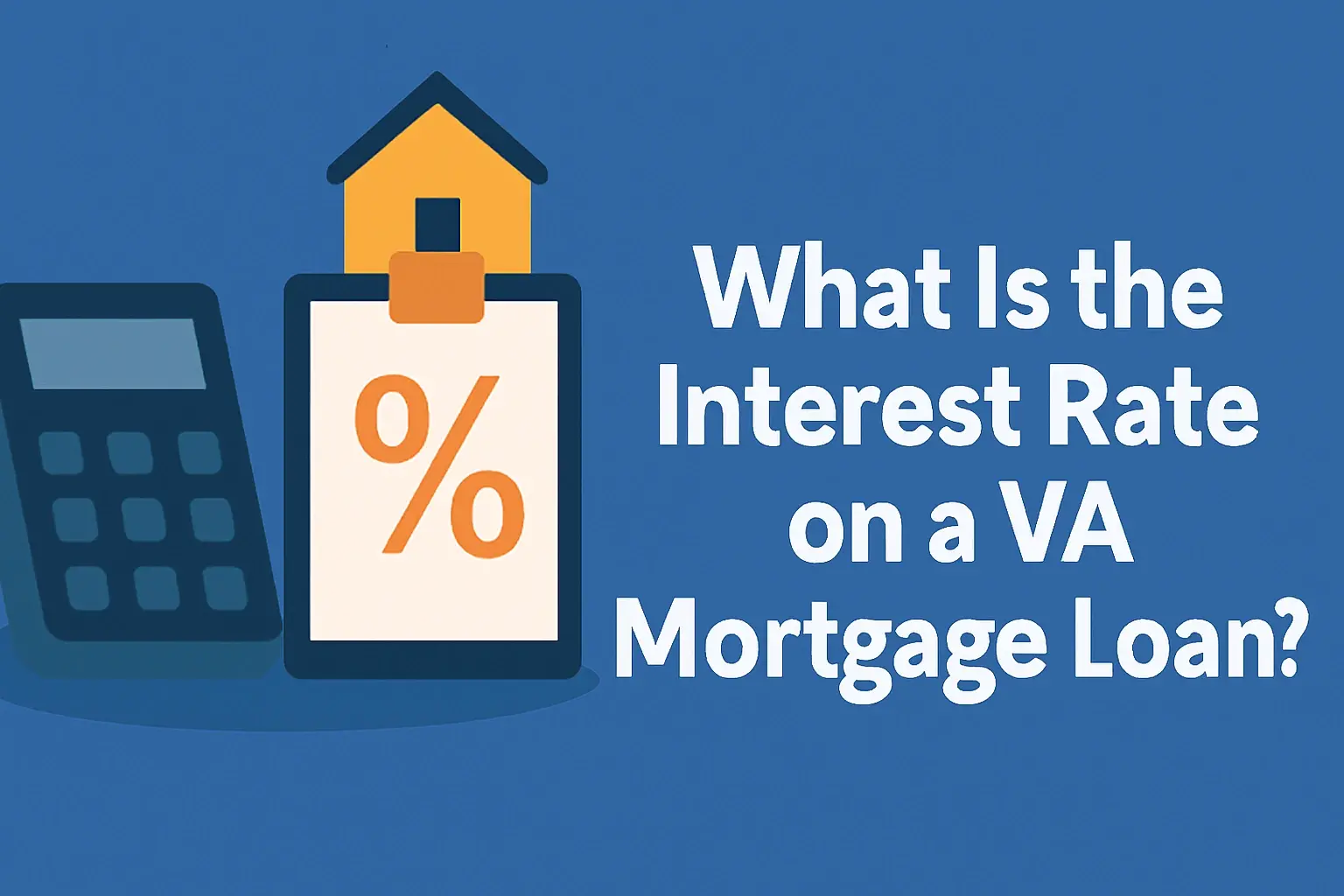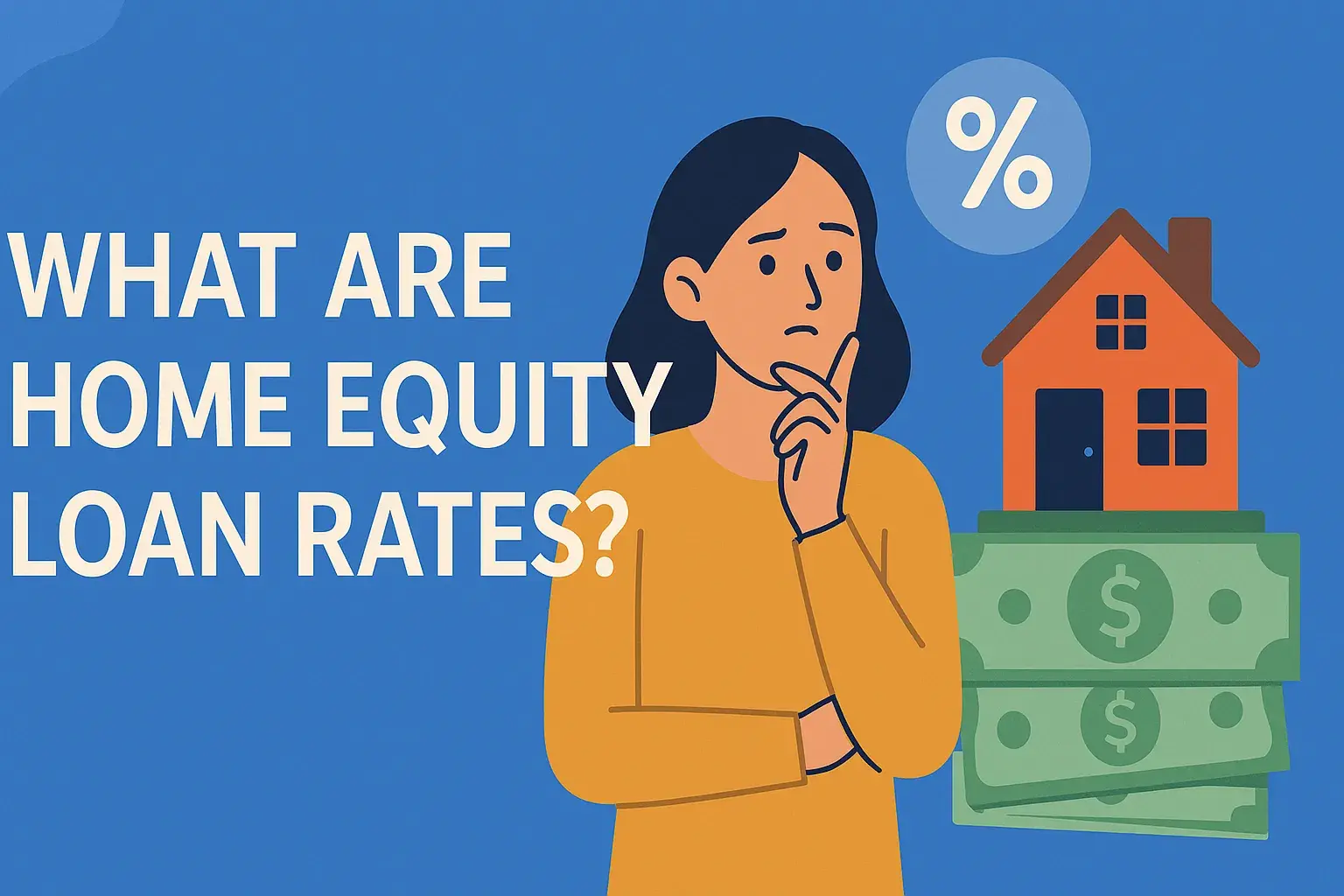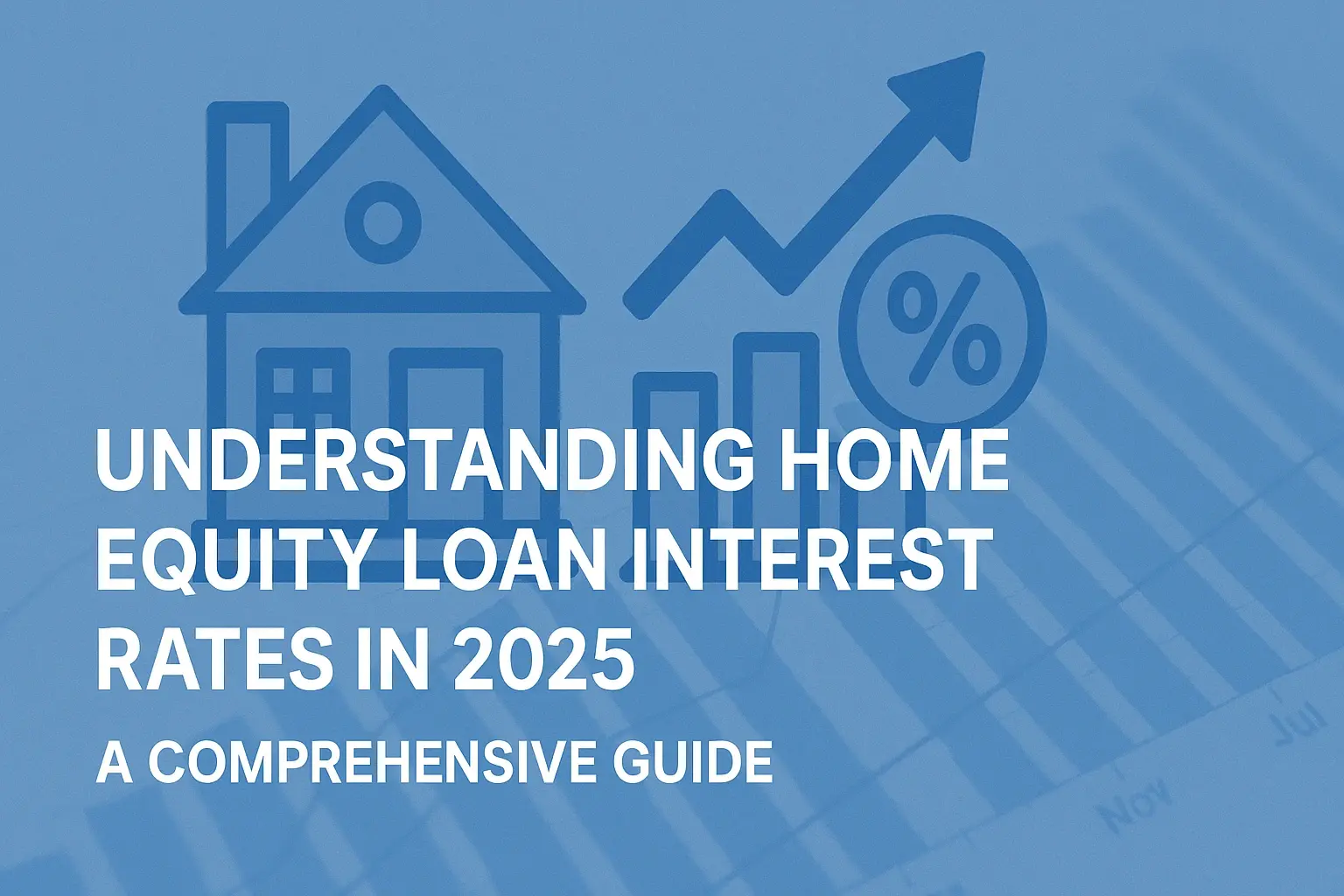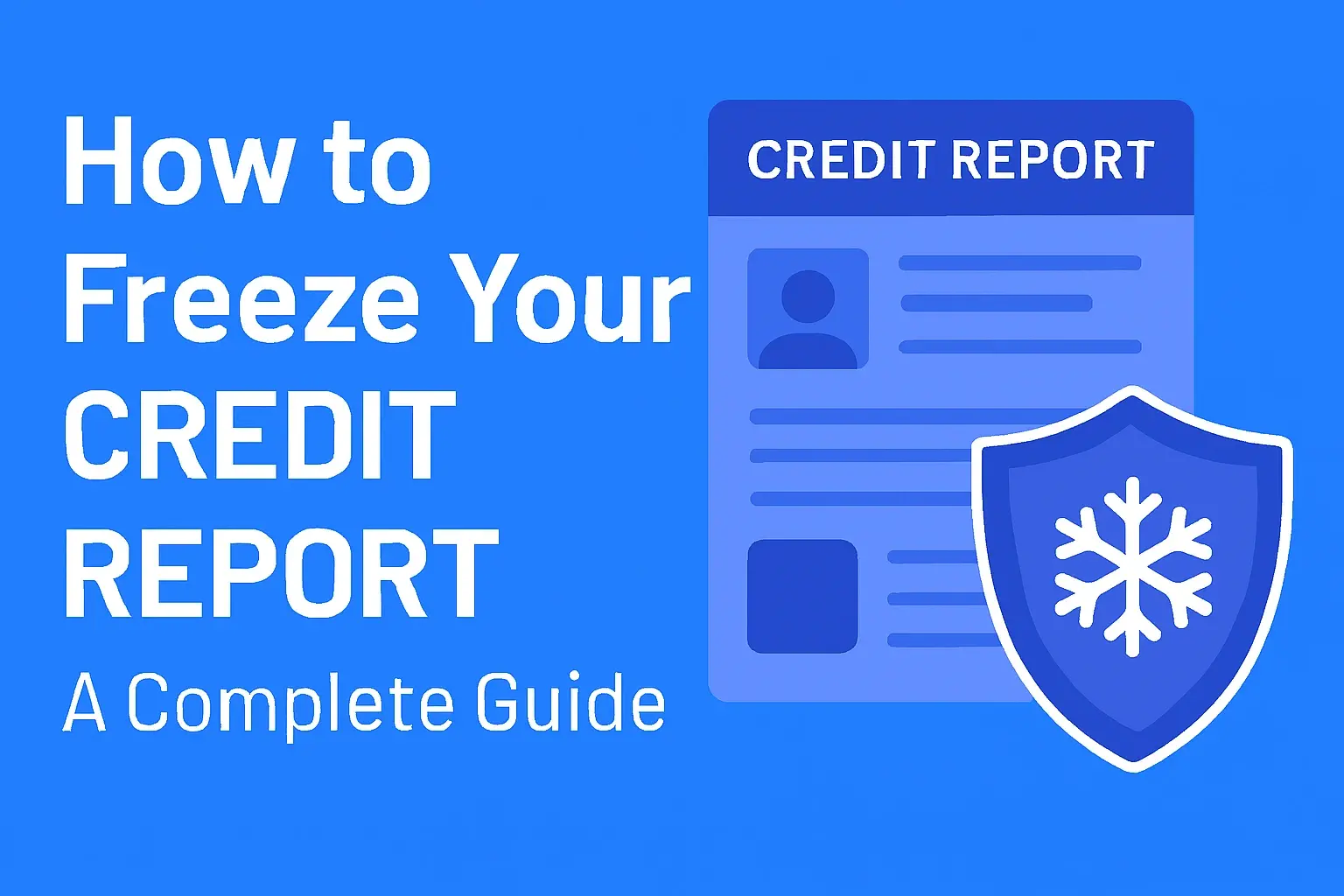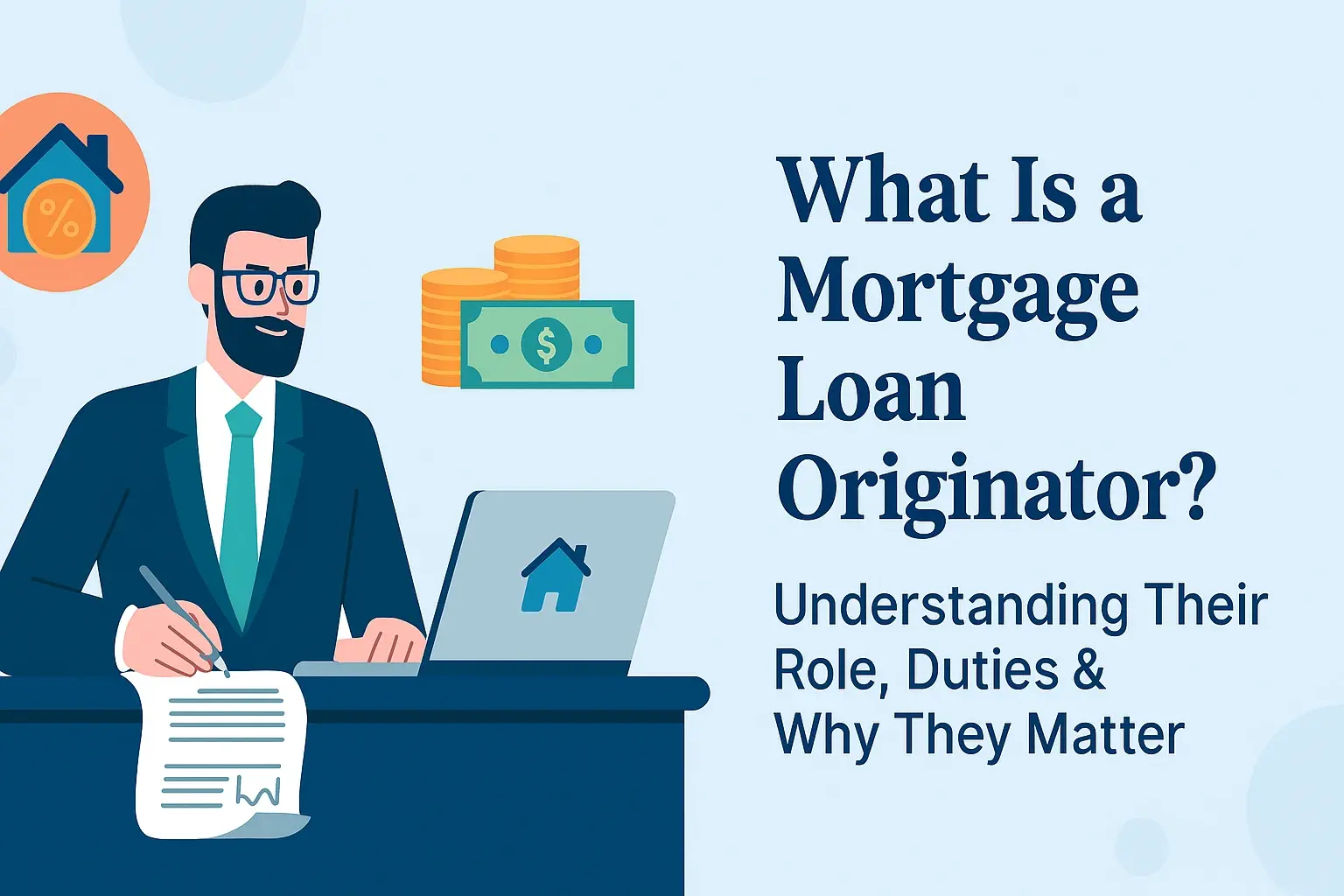-
Posted on: 22 Mar 2025

-
Understanding the difference between a home equity loan and a home equity line of credit (HELOC) is crucial for homeowners looking to leverage their home's value. This guide breaks down each option, their pros and cons, and helps you decide which best suits your financial needs in 2025.
Understanding Home Equity
Before diving into loans and lines of credit, it's essential to grasp what home equity truly means. Your home equity is the difference between your home's current market value and the amount you owe on your mortgage. For instance, if your home is valued at $400,000 and you owe $200,000 on your mortgage, you have $200,000 in equity. This equity represents a significant portion of your wealth and can be a valuable resource for financing major expenses, such as home renovations, debt consolidation, education costs, or unexpected medical bills. Lenders view home equity as collateral, making it possible to borrow against it, typically at more favorable rates than unsecured loans.
In 2025, the housing market continues to show resilience, with many homeowners having built substantial equity over the past few years due to rising property values and consistent mortgage payments. This makes exploring home equity financing a viable option for many. However, it's crucial to understand the nuances of the two primary ways to access this equity: a home equity loan and a home equity line of credit (HELOC).
Home Equity Loan Explained
A home equity loan, often referred to as a "second mortgage," is a lump-sum loan that allows you to borrow a fixed amount of money against the equity in your home. You receive the entire loan amount upfront, and then you begin repaying it immediately with fixed monthly payments over a set period, typically 5 to 15 years. Because the interest rate is usually fixed, your monthly payments remain the same throughout the life of the loan, making budgeting predictable.
The amount you can borrow is generally limited to a percentage of your home's appraised value, often up to 80% or 85%, minus your outstanding mortgage balance. For example, if your home is worth $400,000 and you have 80% loan-to-value (LTV) eligibility, you could potentially borrow up to $320,000. If your current mortgage balance is $200,000, you could borrow up to $120,000 ($320,000 - $200,000).
Key Characteristics of a Home Equity Loan:
- Lump-Sum Disbursement: You receive all the funds at once.
- Fixed Interest Rate: The rate typically stays the same for the loan's duration.
- Fixed Monthly Payments: Predictable payments aid in budgeting.
- Repayment Schedule: A defined term for paying back the loan.
- Collateral: Your home serves as collateral.
Home equity loans are ideal for homeowners who need a specific, one-time sum of money for a large, planned expense. This could be a major home renovation project with a clear budget, a significant debt consolidation effort, or a substantial down payment on another property. The fixed nature of the payments provides financial certainty, which is a significant advantage for those who prefer not to deal with fluctuating monthly costs.
How a Home Equity Loan Works
The process begins with applying to a lender, which could be a bank, credit union, or mortgage company. You'll need to provide financial documentation, including proof of income, credit history, and details about your existing mortgage. The lender will then order an appraisal of your home to determine its current market value. Based on the appraisal and your financial profile, the lender will decide if you qualify and for how much. If approved, you'll sign the loan documents, and the funds will be disbursed to you, typically via check or direct deposit. You'll then begin making regular principal and interest payments according to the agreed-upon schedule.
Consider a scenario where Sarah wants to add a new kitchen to her home, which she estimates will cost $50,000. Her home is valued at $500,000, and she owes $250,000 on her primary mortgage. With an 80% LTV limit, she can borrow up to $400,000. Her available equity for borrowing is $150,000 ($400,000 - $250,000). If she qualifies for a home equity loan, she can borrow the full $50,000 needed for her kitchen. The lender might offer her a 10-year loan at a fixed 7% interest rate. Her monthly principal and interest payment would be approximately $580.50. This provides her with the exact funds needed and a predictable payment to manage.
Home Equity Line of Credit (HELOC) Explained
A Home Equity Line of Credit (HELOC) functions more like a credit card secured by your home equity. Instead of receiving a lump sum, you are approved for a maximum credit limit that you can draw from as needed over a specific "draw period," typically 5 to 10 years. During this draw period, you usually only pay interest on the amount you've borrowed. This flexibility allows you to access funds incrementally, paying interest only on what you use.
HELOCs often have variable interest rates, meaning your monthly payments can fluctuate based on market conditions. After the draw period ends, you enter the "repayment period," where you must repay the outstanding balance, including principal and interest, over a set term (often 10 to 20 years). During this phase, payments will be higher as you're paying down both principal and interest.
Key Characteristics of a HELOC:
- Revolving Credit: Access funds as needed up to a limit.
- Variable Interest Rate: Rates can change, affecting payments.
- Interest-Only Payments (during draw period): Often, you only pay interest on borrowed amounts.
- Draw and Repayment Periods: Distinct phases for borrowing and paying back.
- Collateral: Your home serves as collateral.
HELOCs are well-suited for ongoing expenses or situations where the exact amount needed is uncertain. This includes funding multiple home improvement projects over time, covering fluctuating education costs, managing unpredictable medical expenses, or establishing an emergency fund against your home's equity. The flexibility to draw funds and repay them repeatedly during the draw period offers significant financial agility.
How a HELOC Works
The application and approval process for a HELOC is similar to that of a home equity loan. You'll apply with a lender, undergo a credit check, and have your home appraised. Once approved, you'll receive a credit line and instructions on how to access your funds, often through checks or a dedicated card. During the draw period, you can withdraw funds up to your credit limit. You'll receive monthly statements detailing your balance, interest paid, and minimum payment due (often interest-only). As you repay the principal, that amount becomes available to borrow again. Once the draw period ends, you'll transition to the repayment period, making amortizing payments that include both principal and interest until the balance is zero.
Consider David, who plans to renovate his home in stages over three years. His home is worth $600,000, and he owes $300,000 on his mortgage. With an 85% LTV limit, he can borrow up to $510,000. His available equity for borrowing is $210,000 ($510,000 - $300,000). He applies for a HELOC with a $100,000 credit limit. The HELOC has a 10-year draw period with a variable interest rate currently at 6%, and a 15-year repayment period. In the first year, David draws $40,000 for a bathroom remodel. His monthly payment during the draw period would be approximately $200 (interest-only on $40,000 at 6%). As he repays portions of the principal, that amount becomes available again. After the 10-year draw period, if he still owes $50,000, he would enter the repayment period, and his payments would increase significantly to cover both principal and interest over the remaining 15 years.
Key Differences: A Direct Comparison
While both home equity loans and HELOCs allow you to borrow against your home's equity, their structures and how you access funds are fundamentally different. Understanding these distinctions is key to selecting the right product for your financial strategy.
Feature Home Equity Loan Home Equity Line of Credit (HELOC) Fund Disbursement Lump sum received upfront. Access funds as needed up to a credit limit. Interest Rate Typically fixed. Typically variable. Payment Structure Fixed principal and interest payments. Interest-only payments during draw period; principal and interest during repayment period. Best For Large, one-time expenses with a fixed cost. Ongoing expenses, fluctuating needs, or when exact costs are unknown. Borrowing Flexibility Limited to the initial loan amount. High; can draw, repay, and redraw funds during the draw period. Risk of Payment Fluctuation Low (due to fixed rate). High (due to variable rate). Typical Loan Term 5-15 years. Draw period (5-10 years) + Repayment period (10-20 years). Loan vs. Line of Credit Summary
The core difference lies in how you receive and repay the money. A home equity loan is a straightforward, installment-based loan for a defined purpose. A HELOC is a flexible credit line that offers more control over when and how much you borrow, but with the potential for payment variability. The choice hinges on your spending habits, financial discipline, and tolerance for risk.
When to Choose a Home Equity Loan
A home equity loan is often the preferred choice for specific, well-defined financial needs that require a substantial, one-time infusion of cash. If you have a clear project or expense in mind with a fixed cost, this product offers simplicity and predictability.
Ideal Scenarios for a Home Equity Loan:
- Major Home Renovations with a Fixed Bid: If you've received quotes for a kitchen remodel, a significant addition, or a complete roof replacement, and you know the exact cost, a home equity loan provides the precise amount needed. For example, if a contractor quotes $75,000 for a master suite addition, a home equity loan can cover that exact amount.
- Debt Consolidation for High-Interest Debts: If you have multiple credit cards or other high-interest loans, consolidating them into a single home equity loan can simplify payments and potentially lower your overall interest costs, especially if the loan's fixed rate is lower than your current average interest rate. This is particularly effective for paying off balances like $30,000 in credit card debt.
- Large, One-Time Purchases: For significant purchases like a new vehicle (if not financed through a traditional auto loan), or a substantial down payment on an investment property, where the amount is fixed and known in advance.
- Education Expenses: If you know the exact tuition and fees for a particular academic year or program, a home equity loan can cover that specific amount.
- Financial Predictability: Homeowners who value stable, predictable monthly payments and want to avoid the uncertainty of variable interest rates will find a home equity loan appealing. This peace of mind is invaluable for budgeting.
In 2025, with interest rates potentially fluctuating, locking in a fixed rate for a large expense can be a strategic move. For instance, if current fixed rates for home equity loans are around 6.5% to 7.5%, and you need $100,000 for a home improvement project over 10 years, your monthly payment would be predictable, allowing for confident financial planning. This contrasts with the potential for payments to rise with a variable-rate HELOC.
When to Choose a HELOC
A HELOC offers flexibility and is best suited for situations where you might need access to funds over time, or where the total amount required isn't precisely known at the outset. Its revolving credit nature makes it a versatile financial tool.
Ideal Scenarios for a HELOC:
- Ongoing Home Improvement Projects: If you plan to tackle multiple renovations over several years, a HELOC allows you to draw funds as each phase begins, rather than borrowing the entire project cost upfront. You can fund a kitchen remodel this year, a bathroom renovation next year, and landscaping the year after, drawing only what you need when you need it.
- Managing Fluctuating Expenses: For costs that vary significantly from month to month, such as ongoing medical treatments, childcare expenses, or business operating costs, a HELOC provides the ability to draw more in months with higher expenses and less in months with lower ones.
- Emergency Fund or Contingency Planning: Establishing a HELOC can serve as a readily available source of funds for unexpected emergencies, such as job loss, major home repairs not covered by insurance, or sudden medical crises. This offers a safety net without the need to deplete savings.
- Investment Opportunities: If you anticipate needing funds for investment opportunities that may arise unexpectedly, a HELOC provides liquidity. For example, if you see a chance to invest in a short-term venture, you can draw from your HELOC to capitalize on it.
- Interest-Only Payment Flexibility: During the draw period, the option to make interest-only payments can free up cash flow, which can be beneficial if you're managing other financial obligations or are in a period of lower income. However, it's crucial to remember that this doesn't reduce the principal balance, and payments will increase significantly during the repayment period.
In 2025, with variable rates potentially offering lower initial costs, a HELOC might seem attractive. For instance, a HELOC might start with an introductory rate of 5% or 6% for the first year, which could be lower than a fixed-rate home equity loan. However, borrowers must be prepared for potential rate increases and the eventual transition to higher principal and interest payments during the repayment phase. This flexibility is powerful, but it requires careful management and a clear understanding of future payment obligations.
Application and Approval Process
The process for obtaining both a home equity loan and a HELOC is generally similar, as lenders need to assess your ability to repay and the value of your home. While the steps are alike, the lender's underwriting focus might slightly differ based on the product's structure.
Steps to Apply
- Check Your Eligibility: Lenders typically require a good to excellent credit score (often 620-700+), a stable income, and a low debt-to-income ratio. You'll also need sufficient equity in your home. Most lenders allow a combined loan-to-value (CLTV) ratio of up to 80% or 85%.
- Gather Documentation: Prepare pay stubs, W-2s or tax returns, bank statements, and details of your current mortgage and other debts.
- Shop for Lenders: Compare offers from banks, credit unions, and online lenders. Look at interest rates, fees, loan terms, and customer service.
- Submit Application: Complete the lender's application form, providing all requested personal and financial information.
- Home Appraisal: The lender will order an appraisal to determine your home's current market value. This is a critical step as it establishes the basis for how much you can borrow.
- Underwriting: The lender reviews your application, credit report, appraisal, and other documents to assess your risk and determine approval.
- Loan Approval and Closing: If approved, you'll receive loan documents outlining the terms and conditions. You'll then attend a closing to sign the paperwork, and the funds will be disbursed. For a HELOC, you'll receive information on how to access your line of credit.
Factors Lenders Consider
- Credit Score: A higher score generally leads to better interest rates and terms. In 2025, lenders are particularly keen on borrowers with scores of 700 or above for the most competitive offers.
- Income and Employment Stability: Lenders want assurance that you can consistently make payments. Stable employment history and sufficient income are key.
- Debt-to-Income Ratio (DTI): This ratio compares your monthly debt payments to your gross monthly income. A lower DTI (ideally below 43%) indicates a better ability to handle new debt.
- Home Equity: The amount of equity you have is the primary determinant of how much you can borrow. Lenders typically cap the total mortgage debt (including the new loan/line) at 80-85% of the home's value.
- Property Type and Condition: The type of home and its condition can influence the appraisal value and, consequently, the loan amount.
The approval process can take anywhere from a few days to several weeks, depending on the lender and the complexity of your financial situation. It's advisable to start the process well in advance of when you need the funds.
Interest Rates and Fees (2025)
Interest rates and fees are significant factors that impact the total cost of borrowing. In 2025, homeowners should be aware of the prevailing market conditions and the specific costs associated with each product.
Interest Rate Trends
Home Equity Loans: As mentioned, these typically feature fixed interest rates. In early 2025, fixed rates for home equity loans are generally hovering between 6.5% and 7.5%, though this can vary based on economic conditions, the Federal Reserve's monetary policy, and your creditworthiness. A fixed rate provides budget certainty, shielding you from potential market upticks.
HELOCs: These usually have variable rates, often tied to a benchmark index like the Prime Rate (which itself is influenced by the Federal Reserve's rates). In 2025, initial variable rates for HELOCs might start lower, perhaps in the 5% to 6.5% range, potentially with introductory offers. However, these rates can increase over the life of the loan as the benchmark index changes. It's crucial to understand the margin the lender adds to the index and the rate caps (periodic and lifetime) that limit how much the rate can increase.
Common Fees
Both home equity loans and HELOCs can come with various fees, which can add to the overall cost of borrowing. It's essential to inquire about these upfront.
- Appraisal Fee: Covers the cost of valuing your home. This can range from $300 to $800.
- Origination Fee: A fee charged by the lender for processing the loan, often a percentage of the loan amount (e.g., 0.5% to 1%).
- Annual Fee: Some HELOCs charge an annual fee, particularly if the credit line is unused.
- Transaction Fees: For HELOCs, there might be fees for drawing funds, such as check processing fees.
- Recording Fees: Fees to record the lien on your property with local government offices.
- Late Payment Fees: Penalties for missing a payment deadline.
- Early Closure Fee: Some lenders charge a fee if you close the loan or line of credit within a certain period (e.g., the first 1-3 years).
When comparing offers, look beyond just the interest rate. A lower interest rate with higher fees might not be as advantageous as a slightly higher rate with minimal fees. Always ask for a Loan Estimate or a similar disclosure that itemizes all potential costs.
Tax Implications
Understanding the tax deductibility of interest paid on home equity financing is crucial for homeowners. The rules can be complex and have evolved over time.
Current Tax Law (as of 2025):
Under current U.S. tax law, interest paid on home equity loans and HELOCs is generally deductible only if the funds are used to buy, build, or substantially improve the home that secures the loan. This means if you use the money for renovations, additions, or repairs that enhance your home's value or utility, the interest you pay on that portion of the loan is typically tax-deductible, subject to certain limits.
Key Points:
- Purpose of Funds is Key: The deductibility hinges entirely on how the money is spent.
- Debt Limit: The total amount of home equity debt (including your first mortgage and any home equity debt) on which you can deduct interest is limited. For 2025, this limit is $750,000 for married couples filing jointly and $375,000 for single filers. This limit applies to the aggregate of your primary mortgage and any home equity debt used for home improvements.
- Non-Deductible Uses: If you use the funds for personal expenses, such as paying off credit card debt (unless that debt was incurred for home improvements), consolidating other debts unrelated to your home, or for vacations, the interest paid is generally not tax-deductible.
- Consult a Tax Professional: Tax laws can be intricate and subject to change. It is always advisable to consult with a qualified tax advisor or CPA to understand how these rules apply to your specific situation and to ensure you are claiming deductions correctly.
For example, if you take out a $50,000 home equity loan to replace your roof and upgrade your kitchen, the interest paid on that $50,000 is likely deductible. However, if you use $20,000 of that loan to pay off student loans, the interest on that $20,000 portion would not be deductible.
Risks to Consider
While home equity financing can be a powerful tool, it's essential to be aware of the risks involved. Leveraging your home's equity means putting your most significant asset on the line.
1. Risk of Foreclosure:
This is the most significant risk. Both home equity loans and HELOCs are secured by your home. If you fail to make your payments, the lender has the legal right to foreclose on your property to recoup their losses. This means you could lose your home.
2. Variable Interest Rate Fluctuations (HELOCs):
For HELOCs, rising interest rates can lead to significantly higher monthly payments. This can strain your budget, especially if you didn't anticipate the increase or if your income hasn't kept pace. For instance, if your HELOC rate jumps from 6% to 9%, your interest-only payment on a $50,000 balance would increase by about $125 per month.
3. Over-Borrowing and Financial Strain:
It can be tempting to borrow more than you need or can comfortably afford. Taking on too much debt, even at relatively low rates, can lead to financial hardship, making it difficult to meet other obligations and potentially impacting your credit score.
4. Impact on Home Equity:
Borrowing against your equity reduces the amount of equity you have. If property values decline, you could end up owing more on your home than it's worth (being "underwater"). This can make it difficult to sell your home or refinance your mortgage in the future.
5. Fees and Costs:
As discussed, various fees can add up. It's important to factor these into your decision and ensure they don't outweigh the benefits of the loan or line of credit.
6. Complexity of HELOCs:
The draw and repayment periods, variable rates, and potential for payment shock during the repayment phase can make HELOCs more complex to manage than a straightforward home equity loan. Misunderstanding these terms can lead to financial surprises.
Mitigating Risks:
- Borrow only what you need and can comfortably repay.
- Understand all terms and conditions, especially interest rate structures and fees.
- Create a realistic budget that accounts for potential payment increases.
- For HELOCs, consider the repayment period and how you will manage those larger payments.
- Consult with a financial advisor to assess your personal risk tolerance and financial situation.
Alternatives to Home Equity Financing
While home equity loans and HELOCs are popular, they aren't the only options for accessing funds. Depending on your needs and financial situation, other alternatives might be more suitable.
1. Personal Loans:
These are unsecured loans, meaning they don't require collateral. They are generally easier and faster to obtain than home equity products. However, they typically have higher interest rates and shorter repayment terms compared to home equity options, especially for larger loan amounts. They are best for smaller, immediate needs.
2. Cash-Out Refinance:
This involves refinancing your existing mortgage for a larger amount than you currently owe. The difference is paid to you in cash. You'll have a new, larger first mortgage, and your interest rate will be based on current market conditions for primary mortgages. This can be advantageous if current mortgage rates are significantly lower than your existing rate, allowing you to lower your overall housing payment while accessing cash.
3. Home Renovation Loans:
These are specifically designed for home improvements and can be obtained without needing to tap into existing equity. Examples include FHA 203(k) loans or Fannie Mae's HomeStyle Renovation Mortgage. They often allow you to finance both the purchase of a home and its renovation, or just the renovation of an existing home.
4. Retirement Account Loans:
You can borrow from your 401(k) or other retirement accounts. These loans often have lower interest rates and flexible repayment terms. However, borrowing from retirement funds can significantly impact your long-term savings and growth, and if you leave your employer, the loan may need to be repaid quickly or be subject to taxes and penalties.
5. Home Equity Investment (HEI) Agreements:
This is a newer, alternative product where a company gives you cash in exchange for a percentage of your home's future appreciation. You don't make monthly payments, and the repayment amount is tied to the home's value when you sell or after a set term. This is not a loan, but rather an equity-sharing arrangement.
6. Borrowing from Family or Friends:
This can be a low-cost option if available, but it carries the risk of straining personal relationships if not handled with clear terms and timely repayment.
Each alternative has its own set of pros, cons, interest rates, fees, and risks. The best choice depends on the amount of money needed, the purpose of the funds, your creditworthiness, and your comfort level with different types of debt and risk.
Making the Right Choice for You
Deciding between a home equity loan and a HELOC, or exploring alternatives, requires careful consideration of your individual financial circumstances, goals, and risk tolerance. There isn't a one-size-fits-all answer, but by understanding the key differences and your personal needs, you can make an informed decision.
Key Questions to Ask Yourself:
- What is the exact amount of money I need? If it's a fixed, known sum, a home equity loan is often simpler. If the amount is variable or uncertain, a HELOC offers more flexibility.
- What is the purpose of the funds? For a single, large purchase like a kitchen remodel with a fixed quote, a home equity loan is ideal. For ongoing expenses like education or multiple renovation phases, a HELOC might be better.
- How important is payment predictability? If you prioritize stable, predictable monthly payments, a fixed-rate home equity loan is the clear winner. If you can tolerate potential payment fluctuations in exchange for flexibility, a HELOC could work.
- What is my risk tolerance? Are you comfortable with the potential for variable rates to increase on a HELOC, or do you prefer the security of a fixed rate? Are you confident in your ability to manage the repayment phase of a HELOC?
- What are the total costs? Compare not just interest rates but also all associated fees for both options. A slightly higher rate with fewer fees might be more cost-effective.
- What is my timeline for repayment? Consider how long you need to borrow the money and how long you can afford the monthly payments.
Final Recommendations for 2025
As you navigate your options in 2025:
- Prioritize Fixed Rates for Large, Predictable Expenses: If you have a significant, one-time expense with a clear cost (e.g., a $60,000 home addition), a home equity loan offers the peace of mind of a fixed payment and interest rate, protecting you from potential rate hikes.
- Embrace HELOCs for Flexibility and Ongoing Needs: For homeowners planning multiple renovations over time, or those with fluctuating expenses like medical bills or business investments, a HELOC provides the agility to draw funds as needed and repay them, potentially with lower initial interest costs. However, be prepared for the repayment phase and potential rate increases.
- Always Compare Offers: Lenders' rates and terms can vary significantly. Get quotes from multiple institutions, including banks, credit unions, and online lenders.
- Read the Fine Print: Understand all terms, conditions, fees, and repayment schedules before signing any agreement. Pay close attention to variable rate adjustments and any early closure penalties.
- Consider Your Long-Term Financial Health: Ensure that taking on this debt aligns with your overall financial plan and doesn't jeopardize your ability to meet other essential financial obligations.
By thoroughly evaluating your needs against the features of each product, you can confidently choose the home equity financing option that best supports your financial goals in 2025 and beyond.
Disclaimer: This information is for educational purposes only and does not constitute financial or tax advice. Consult with a qualified professional for personalized guidance.


